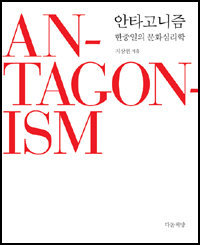Culture of Korea, China, and Japan
Culture of Korea, China, and Japan
Posted December. 05, 2020 07:45,
Updated December. 05, 2020 07:45

One of the questions Koreans get the most when they are outside the country is whether they came from China or Japan. With the surge of popularity of K-pop in recent years, Koreans nowadays often get asked if they came from Korea. It may vary from person to person, but the cultural characteristics of three east Asian countriesㅡKorea, China, and Japanㅡare so similar that outsiders might find it hard to distinguish the difference between them. Koreans would feel the same way. Whether we like it or not, the three East Asian countries, which share many cultural similarities, such as Confucianism and the use of chopsticks and Chinese characters, are similar and different in so many ways.
The author of this book adopted the biological concept of “antagonism” to shed light on the differences among the three countries.
The author, who has long studied the “cultural gene” of the three countries based on their handicrafts as ICT Design professor at Hansung University, believes that the psychology and history of a community that determines the culture of a country are formed through antagonism. Culture, in turn, affects art, architectural styles, festivals, clothes, and ornaments to create certain characteristics of a country.
The author uses antagonism as a theoretical tool to examine the phenomena revealed in the handicrafts and architectures of the three countries. In the book, China’s openness and exclusiveness are demonstrated through its unique housing style called Toru. Japan’s conflicting characteristics of reduction and expansion are explained through a Buddhist altar. Keywords such as “carelessness” and “obsession” are used to describe Korea. The author cited 18th-century painter Kim Hu-shin’s Daeqaedo, which has a high artistic value but informal at the same time, and Buddhist paintings from the Goryeo Dynasty as examples to explain the concept.
A certain perception about certain country and the characteristics of its people is bound to be erroneous. The author is well aware of that. “There are always examples that are contrary to certain perceptions” said the author. “The purpose of studying the characteristics of a country is not to separate superiority from inferiority. It is rather to help us find the best solution to real-world problems.”
pep@donga.com







